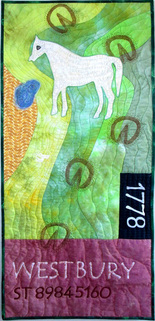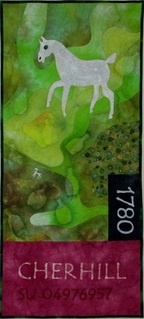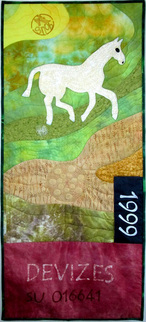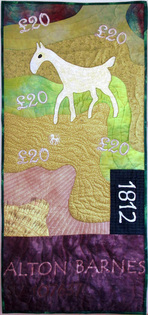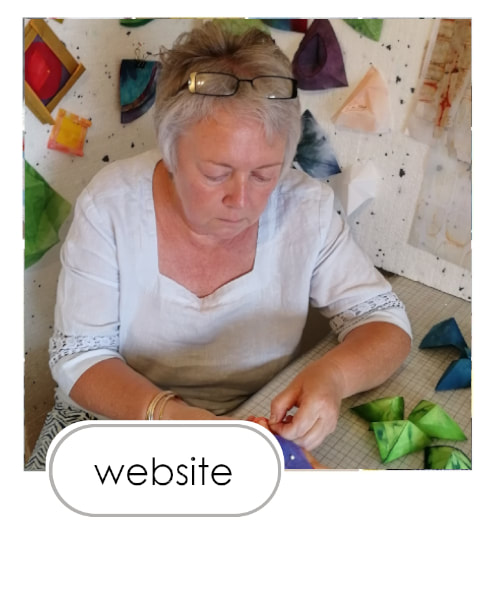|
Here they are at last - a long time coming, but for me, a cause for celebration. The first 4 of the 8 'Wiltshire's White Horses'. I have really enjoyed researching the horses, discovering their stories, walking to them and making the quilts. The Westbury Horse; famous for being the first of the Wiltshire horses, taking its nocturnal walk to the spring to drink. The Cherhill Horse; having its glass eye made from upturned bottles stolen over and over again. The Devizes Horse; a new horse for a new Millennium. Overlooking the site of several mysterious crop circles and a mirror image of an older local horse, known as the 'Snobs' Horse' now lost. Alton Barnes Horse: the story goes £20 was paid for the horse to be cut, but the man absconded with the money before doing the work. A second payment was required to get the job done. The complete series will be on show at my first British solo exhibition next year at Midsomer Quilting, along with my Destination Series and Modition Series.
'Here and Far' 1st - 15th May 2015 - Midsomer Quilting, Chilcompton, BA3 4RR
0 Comments
|
|
